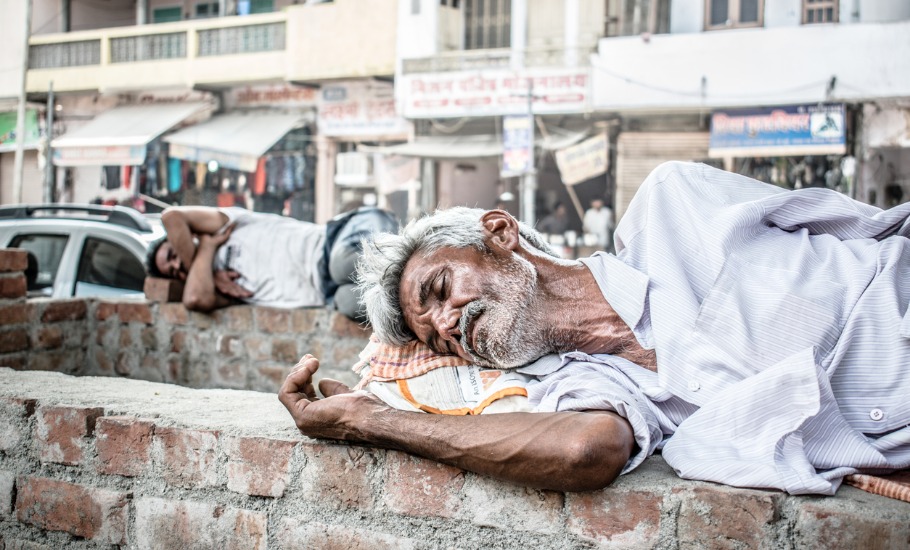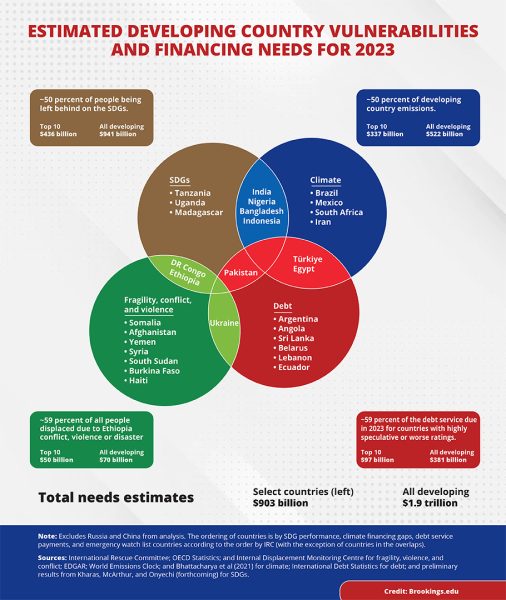
Developing nations face 4 key challenges in 2023; India has 2: Report
US-based Brookings Institution has zeroed in on four key vulnerability areas that will challenge developing countries in 2023, many of these overlapping — SDGs, climate, debt, and fragility, conflict and violence

With rising inflation and an imminent financial slowdown, 2023 is likely to be difficult for economic development. Brookings Institution, a US-based non-profit public policy organisation, has zeroed in on four vulnerability areas that will continue to challenge developing countries this year, many of these overlapping. According to Brookings’ analysis, India is among the nations that will face long-term threats to climate action and sustainable development goals (SDGs).
Many others will face short-term threats such as debt and humanitarian distress, or a combination of both long- and short-term vulnerabilities with little fiscal room to address them. According to the analysis, if these issues are not addressed in due time, any of these could have severe consequences for millions of people, leading to systemic failure at the global level in a bid to ensure their safety and prevent economies from slumping further.

The four priority areas
Brookings has identified four priority areas in economic development with major gaps. These are SDGs, climate action, debt vulnerability, and fragility, conflict, and violence.
SDGs: This year is crucial for SDGs because we are at the midpoint of the 2015–2030 timeframe. In September, heads of state will meet at the United Nations to estimate the progress. However, the report says that all SDGs are off target and some are even in the negative. India is among the 10 countries left behind on key SDG targets. And these countries account for around half the number of people affected, as well as half the financial gap. Around 600 million people are still living in extreme poverty, and millions do not have access to food, healthcare, education, or modern energy sources. Based on previous estimates, more than $1 trillion in additional spending is required for these 10 countries to achieve their SDGs. Apart from India, these nations include Bangladesh, Pakistan, Indonesia, Democratic Republic of Congo, Ethiopia, Nigeria, Tanzania, Uganda, and Madagascar.
Also read: India-backed ‘loss and damage fund’ gets the green signal at COP 27
Climate: Excluding China, developing countries account for 38 per cent of current global greenhouse gas emissions. By 2030, that figure is expected to rise to 50 per cent. While many developing countries, including India, are trying to shift to green solutions, financing remains a challenge. For example, developing countries (excluding China) account for less than 20 per cent of the installed solar capacity worldwide. An additional $500 billion is needed this year alone to seal the gap in the shape of sustainable infrastructure projects and solutions in agriculture, forestry, and land use. The 10 countries with the largest financing gaps need around two-third of that amount, which is $350 billion. These nations — including India, Nigeria, Bangladesh, Indonesia, Brazil, Mexico, South Africa, Iran, Turkey, and Egypt — emit around half of all developing country emissions (excluding China).
Debt: According to the World Bank International Debt Statistics, developing countries owe around $381 billion in debt service this year on medium- and long-term external debt. Of these, 53 countries with “highly speculative” credit rating (or worse) owe $166 billion in debt service. The top 10 debtors — including Pakistan, Sri Lanka, Turkey, Egypt, Argentina, Angola, Belarus, Lebanon, Ecuador, and Ukraine — owe almost 60 per cent of this debt service. Most large debtors are not even eligible to renegotiate their debts under the G-20-led Common Framework. This year may see more developing countries losing access to private capital markets and plunging into systemic debt crises.
Also read: COP-Out 27: From emission cut goals to climate fund, nothing is a game changer
Humanitarian crises: Ukraine hogged the headlines and grabbed public sympathy throughout 2022 but it is not the only nation facing armed conflict. Many other nations — mostly in Africa and central Asia — continue to face humanitarian crises stemming from natural disasters, armed conflict, food crises, and political instability. On the International Rescue Committee’s Emergency Watchlist of 10 countries most at risk of a humanitarian crisis are Afghanistan, Syria, Somalia, Yemen, South Sudan, Burkina Faso, Haiti, Democratic Republic of Congo, Ethiopia, and, of course, Ukraine. These countries account for around 60 per cent of people displaced due to conflict, violence, or disaster. According to the UN, only about 50 per cent of the humanitarian appeals for these countries (excluding Ukraine) was met. According to the Kiel Institute for the World Economy, Ukraine alone received $17.8 billion in humanitarian aid for roughly 10 months in 2022.
The way ahead
So, there is an imminent crisis. To avoid the worst outcomes, the Brookings analysis suggests better policies, stronger institutions, and sound economic governance at the national level. At the global level, larger flows of official finance are needed.
It suggests that the global community needs to put a plan in place to avoid systemic risk and make a watchlist of systemically important countries, focusing on those with the largest number of affected people. Smaller countries can be dealt with as and when the need arises.
Also read: 30×30 pact at COP15: What’s this target, and is it achievable?
In all, there are 30 countries to be watched, with 10 being on two lists. The total resource gap in those 10 countries in 2023 amounts to $903 billion. While these countries need domestic sources to meet the crisis, a substantial amount must come from external assistance. Significantly the World Bank has already announced a “surge” financing program that will last through June.
However, it must also be remembered that these countries ae not the only ones with crises. Many face multiple of these vulnerabilities and, therefore, need funds. The UN climate summit in Egypt last November ended with a landmark decision to establish a fund to address loss and damage. The Green Climate Fund is also up for replenishment this year.
However, rich countries need to do more than paying lip service, and these funds need to be properly channelled to developing countries, of which there is little indication so far. Unless things change right now, more and more crises will continue to hinder global development.

